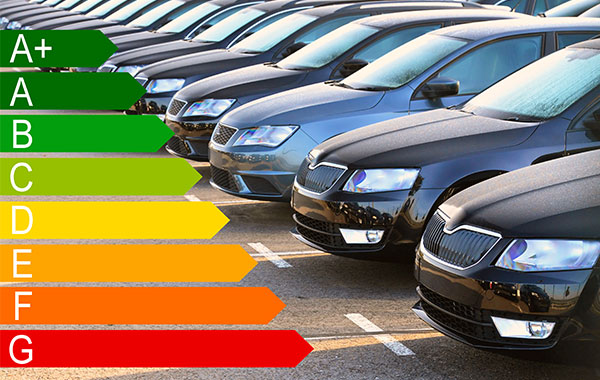Energy consumption labelling for passenger cars
Since May 2012, the current energy consumption labelling for passenger cars (passenger car EnVKV) has been in force in Germany. It is intended to inform car buyers how efficient a particular model is. According to the directive, a vehicle is efficient if it has low fuel consumption and thus low CO2 emissions, taking vehicle weight into account. Depending on its efficiency, vehicles are divided into CO2 efficiency classes and marked with a colour palette. The vehicles with the relatively best consumption and emission values are found in the green classes.
The passenger car EnVKV stipulates that new passenger cars on offer must be fitted with a notice on the vehicle providing information on fuel consumption, CO2 emissions, the efficiency class and the amount of motor vehicle tax. In addition, an overview of all vehicles available at this location with their respective consumption and emission values must be available at the point of sale. It must also be possible to hand out the guide, which contains the fuel and electricity consumption and CO2 emission values of all currently available passenger cars. The passenger car EnVKV also contains regulations on what information vehicle advertising must contain.

Figures on fuel consumption or electricity consumption and CO2 emissions are to be displayed in accordance with the NEDC procedure given. Since September 2018, however, consumption and emission values for passenger cars have been determined using the new, more realistic WLTP method. The vehicle tax is now also levied according to the WLTP values. It is therefore
also necessary to adjust the passenger car EnVKV so that the prescribed information can be provided in accordance with the new WLTP values. The revision of the existing regulation will be carried out by the Federal Ministry of Economics. At present, the long overdue new version of the passenger car EnVKV has been announced for summer 2021.

